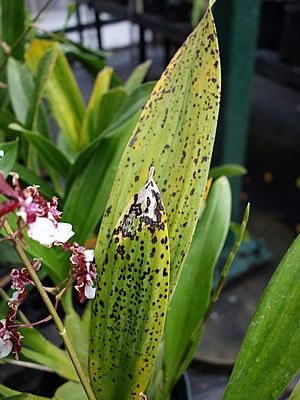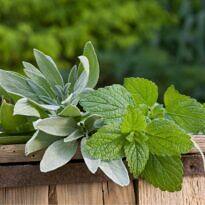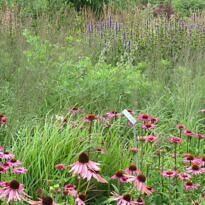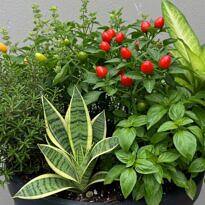
Noticed a small (or large!) spot on the leaf of your orchid, haven’t you?
Don’t panic, you’ve come to the right place. Orchids are usually resilient plants that rarely fall ill. However, every orchid enthusiast has encountered this problem at some point, so rest assured. This article specifically addresses spots on orchid leaves, those annoying little diseases that often seem to not affect the plant much but ruin its aesthetic.
Many orchids can continue to bloom normally, with the disease progressing slowly. Nevertheless, it is best to take preventive and treatment measures as soon as possible. A small and simple spot can be slow at the start and then spread rapidly, spoiling not just one orchid but often the entire orchid collection.
To begin this discussion, it is important to know that orchids, belonging to the family Orchidaceae, are known for their impressive diversity and exotic beauty. With over 25,000 species and more than 100,000 hybrids, each type may have unique care requirements. Although generally resilient, orchids can be sensitive to environmental changes, making them susceptible to diseases, including leaf spots.
The causes:

Generally, fungal and bacterial diseases are opportunistic and arise during prolonged rainy periods, excessive watering, or other factors that prevent good drainage of the plant’s substrate. Allied to this is often poor ventilation and insufficient lighting.
Among fungi, the genera Botrytis and Fusarium are often responsible for leaf spots on orchids. Bacteria, like those of the genus Pseudomonas, can cause brown spots with a yellow halo. Viruses, such as the mosaic virus, although less common, can also cause spots and irregular patterns on the leaves.
How to prevent:

Like any other disease, there are factors that facilitate its establishment. Therefore, here are some tips to keep your orchids protected against many diseases:
1. Conscious Purchase: In addition to observing the beauty of the flower, also check all other structures. See if the plant is firmly in the substrate and if there are any spots of any kind on the leaves, pseudobulbs, and roots. Also, pay close attention to the underside of the leaves. Bringing a sick plant home can be the start of a real epidemic and is more common than it seems.
2. Quarantine: Never place a newly arrived plant together with the others in the orchidarium, regardless of the plant’s origin. Keep it in a similar but separate location, so it can adapt and have time to show any latent infection that may have accompanied it. Observe it closely for at least 40 days.
3. Sterilize Materials: Scissors, shovels, chopsticks, knives, styluses, pots, and all the materials you use on your orchids should be sterilized between each plant. This way, you limit the transmission of diseases by contaminated tools.
4. Maintain Good Spacing: Resist the temptation to keep your orchids all close together or hanging over each other. Adequate space between them ensures good ventilation and reduces the spread of pests and diseases through irrigation splashes or leaf-to-leaf contact.
5. Keep the Orchidarium Clean: No leaves scattered on the benches or the floor of the orchidarium, nor algae covering the glass of the greenhouse. Remove these debris to prevent contamination. And be careful: sick leaves should not go to composting. Preferably bury them and cover with lime.
6. Good Management: Healthy and well-nourished plants rarely get sick, as they have an efficient defense system. Therefore, have a well-organized scheme of watering, pruning, repotting, preventive spraying, and fertilization. Lighting, ventilation, and air humidity should also be ideal. So, check the needs of each species and group them so that they are similar, and thus management becomes simpler.
7. Complete Nutrition: In addition to all the factors already mentioned, a proper balance of nutrients is crucial for keeping orchids healthy. Deficiencies or excesses of micronutrients, such as nitrogen, phosphorus, or potassium, can make orchids more vulnerable to diseases. A balanced diet, using fertilizers specific to orchids, can strengthen their natural defenses.
How to Treat:

In this article, we will explore a surgical treatment that does not involve the use of spray products, whether natural or synthetic. Let’s go?
Step 1: Orchids do not have the ability to regenerate their own leaves. Therefore, do not hesitate and cut the affected part with a good safety margin. That is, cut beyond the healthy part that is around the spot, as often the disease-causing agent is already spreading through the tissues, even if the plant has not shown symptoms. If necessary, cut the entire leaf. Make a clean cut, with a knife, scissors (only for orchids with thin and soft leaves) or a very sharp scalpel, no serrated knives.
Step 2: Cut? Great, make a healing paste by mixing powdered cinnamon with natural aloe vera or pure mineral oil, which can be bought at a pharmacy. The paste should have a good consistency, very thick, and if necessary keep adding more cinnamon to the mixture. Apply with a cotton swab, covering the entire cut area. Cinnamon is an excellent plant healing agent, as well as aloe vera, and contains antifungal and antibacterial substances that will help treat the wound.
Step 3: If the spot is small and circumscribed, you can stop there. Move the plant to a separate location from the others, reduce watering for a few weeks, and see how it behaves. If there are several spots, in addition to the cuts, it may be necessary to use a topical or systemic fungicide, and even clean the substrate. Simple topical fungicides can be found in gardening stores.
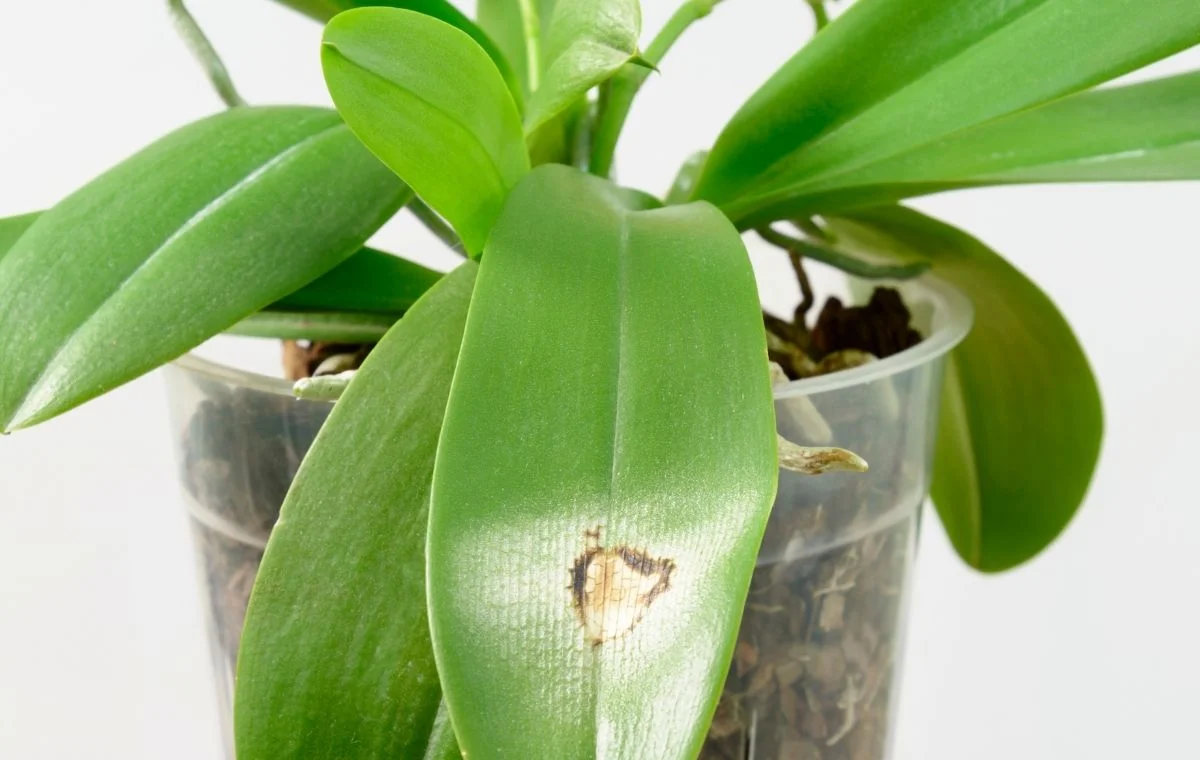
Importance of Variety and Climatic Conditions:
It’s crucial to recognize that different orchid varieties exhibit varying levels of resistance to diseases and pests. Some species, like those of the Phalaenopsis genus, are more prone to fungal issues, while others, such as many Cattleya and Dendrobium varieties, may be more resilient. Additionally, local climatic conditions play a vital role in disease prevention. In high humidity regions, for example, ensuring proper ventilation and avoiding over-watering is essential to prevent the onset of fungal and bacterial diseases.
Responsible Use of Pesticides and Natural Alternatives:
When it comes to treatment, the responsible use of pesticides is vital. Excessive or inappropriate use of these products can harm not only the plant but also have environmental and health impacts. Therefore, always read and follow the usage instructions. Moreover, there are natural alternatives that can be effective against some diseases. For instance, garlic infusions or chamomile tea possess antifungal properties and can be used as preventive sprays. However, these natural solutions should be applied cautiously and after a small test on a part of the plant, to ensure they do not cause harm.
Continuous Monitoring and Record Keeping:
Lastly, continuous monitoring and detailed recording of the health status of your orchids are essential practices. Keeping a diary or photographic log helps track the progress of the plants and the effectiveness of the measures taken. This also allows for quicker and more accurate diagnosis in case of problem recurrence, facilitating the identification of patterns and the implementation of more effective prevention and treatment strategies in the future.

